Australian Colloid and Surface Science in 2007
Russell Crawford A C and Erica J. Wanless BA Faculty of Life and Social Sciences, Swinburne University of Technology, Mail 31, P.O. Box 218, Hawthorn, VIC 3122, Australia.
B School of Environmental and Life Sciences, University of Newcastle, Callaghan, NSW 2308, Australia.
C Corresponding author. Email: rcrawford@swin.edu.au

Russell Crawford is Professor and Dean of the Faculty of Life and Social Sciences at Swinburne University of Technology, where he has been since 1984. His areas of research interest include the removal of aqueous heavy metals from water systems using adsorption processes, and the extraction of biologically active compounds from biological systems, including plants and fungi. |
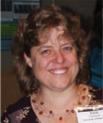
EricaWanless is an Associate Professor of Chemistry at the University of Newcastle, where she has been since 1996. Her research centres on surfactant and block copolymer self-assembly at the solid–liquid interface, with particular interest in atomic force microscopy. |
Australian Journal of Chemistry 60(9) 627-629 https://doi.org/10.1071/CH07293
Published: 11 September 2007
This special issue of the Australian Journal of Chemistry comprises a selection of papers from the program of the Australian Colloid and Interface Symposium (ACIS), which was held at Coogee Beach, Sydney from 4 to 8 February 2007. The conference was chaired by Professor Roger Horn from the Ian Wark Research Institute at the University of South Australia. Over 240 scientists gathered at Coogee for this meeting, including 93 international guests from over 20 different countries and 150 Australians from almost every state in Australia. The weather was excellent during the conference, but, as the conference attendees arrived at Coogee, unfortunately so too did about 6000 bluebottles, who also arrived to enjoy the beautiful local waters. Ironically, the bluebottles left at about the same time as the bulk of the conference delegates.
The ACIS 2007 program highlighted current research in colloid and interface science from both fundamental and technological viewpoints, as well as highlighting some of the exciting new areas in which the discipline is having a substantial impact. This year’s themes were Spectroscopy and Scattering in Surface and Colloid Science (chaired by David Beattie, Ian Wark Research Institute, and Jim McQuillan, University of Otago), which drew attention to the opportunities for studying colloidal and interfacial interactions using either spectroscopic or scattering techniques, with the latter particularly focussed towards the Australian Synchrotron and the Opal Replacement Reactor. The theme of Surface Forces, Nanotribology and Biological Interactions (chaired by Michelle Gee, University of Melbourne, and Roger Horn, Ian Wark Research Institute) honoured the work of Professor Jacob Israelachvili (Fig. 1), including his seminal research in surface forces undertaken at the Australian National University in the late 1970s and early 1980s. The Inorganic Oxide Surfaces theme (chaired by George Franks, University of Melbourne, Jonas Addai-Mensah, Ian Wark Research Institute, and Yang Gan, University of Newcastle) highlighted the important role that inorganic oxides continue to play as sources of commodity metals and in adsorption studies involving aqueous heavy metals and organic and radionuclide pollutants. The theme of Drops and Bubbles (chaired by Ray Dagastine, University of Melbourne, and Clive Prestidge, Ian Wark Research Institute), encompassing the subtheme of soft materials, focussed on a variety of soft matter interfaces including foam and emulsion research. The Hierarchical Materials theme (chaired by Calum Drummond, CSIRO Molecular and Health Technologies, and Matt Trau, University of Queensland) provided a challenge to the conference organisers in the first instance as its scope was unclear. This theme would highlight the importance of materials exhibiting order on several length scales, along with self-assembled structures for therapeutic applications. The theme of Pharmaceutical Applications (chaired by Ben Boyd and Ian Larson, Monash University) included several novel presentations that described composite colloidal materials that were being applied as drug delivery systems.
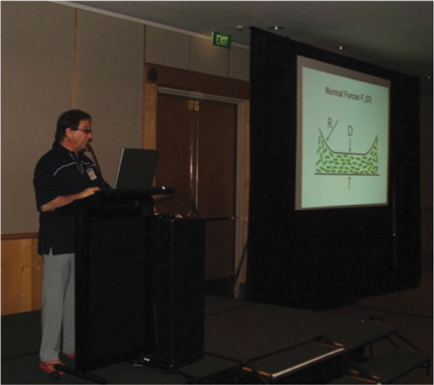
|
Every conference usually includes a ‘catch-all’ theme for presentations that do not neatly fit into the other named themes of the conference. The ACIS 2007 was no exception. The Frontiers of Colloid and Interface Science theme (chaired by Shannon Notley, Australian National University, and Rob Atkin and Greg Warr, University of Sydney) comprised many excellent presentations, ranging from ionic liquids to paper fibre surface chemistry.
The symposium is also the home of the A. E. Alexander lecture. This lecture commemorates the contributions made by A. E. Alexander (Professor of Physical Chemistry, University of Sydney 1956–1970) to colloid science, and in particular to the development of the discipline in Australia. Past A. E. Alexander lecturers are listed in Table 1. The 2007 A. E. Alexander lecturer was Brian Vincent of Bristol University. Professor Vincent has made a significant contribution to Australian Colloid Science through sabbatical visits, centre advisory board membership, and the training of numerous Australian scientists at postdoctoral level. He has also provided what can only be described as a ‘passionate love’ of cricket in Australia through his unwavering support of the Australian cricket team (Fig. 2). His plenary lecture entitled ‘Microgel Particles: an Overview’ included the recent results contained within the paper in the present issue by Bradley et al.[1]
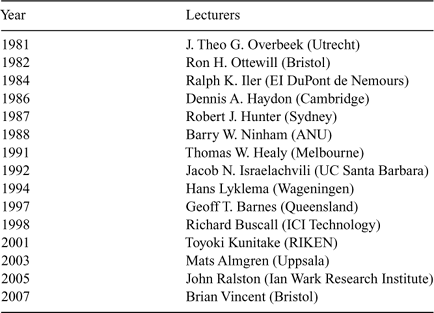
|
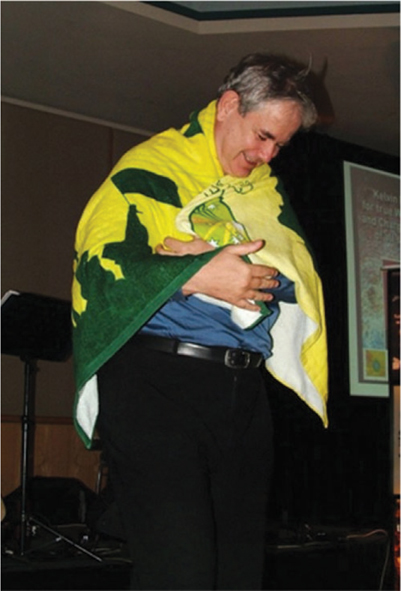
|
In assembling this special issue of the Australian Journal of Chemistry, we have attempted to offer a small taste of the ACIS 2007 symposium program. All bar one conference theme are represented. Four keynote speakers have contributed articles: Julian Eastoe (Bristol University),[2] Suzanne Giasson (Université de Montréal),[3] Darsh Wasan (Illinois Institute of Technology),[4] and Ulrich Schubert (Eindhoven University of Technology).[5] Professor Wasan also took the opportunity to present Professor Tom Healy (University of Melbourne) (Figs 3 and 4) with a Lifetime Achievement Award on behalf of the Journal of Colloid and Interface Science, a journal started (as the Journal of Colloid Science) by Tom’s Ph.D. supervisor Victor La Mer in 1946.
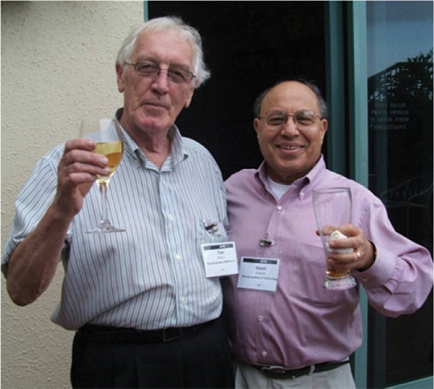
|
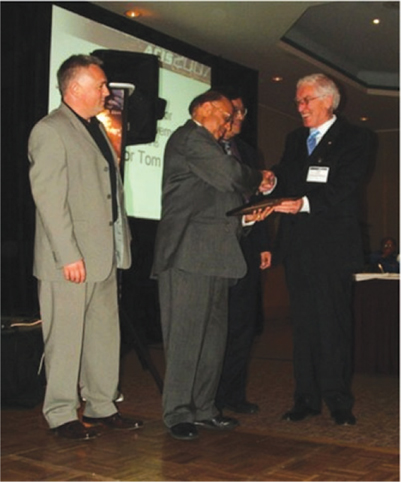
|
In addition to the Keynote and Plenary Lecturer contributions, this issue was also fortunate to receive contributions from both oral and poster presenters, including two articles on silica nanoparticles (Hunter et al.[6] and Pham et al.[7]) and one on surface force measurement (Willmott[8]), and one on antigen–antibody reactions for immunoassay micro-arrays (Chamritski et al.[9]).
Finally, we would like to thank all who contributed to the success of ACIS 2007 and to this special issue of the Australian Journal of Chemistry. Our thanks go to the organising committee, the sponsors (Ian Wark Research Institute – University of South Australia, ATA Scientific, Lastek, Australian Synchrotron, The Particle Fluid Processing Centre – University of Melbourne, the CRC for Smartprint, Orica, Scientific Solutions, Starpharma, Victorian College of Pharmacy – Monash University, The Ian Potter Foundation, Australian Nuclear Science and Technology Organisation, Australian Institute of Nuclear Science and Engineering, the University of Sydney, and the Royal Australian Chemical Institute and Davies Collison Cave), the conference secretariat (Tulips Meetings Management), and all of the delegates. Finally, we thank Dr Alison Green, Editor of the Australian Journal of Chemistry for her assistance and support in the preparation of this special issue.
We encourage all readers of the Australian Journal of Chemistry to visit the Colloid and Surface Science Division of the Royal Australian Chemical Institute website www.colloid-oz.org.au. Here you will find information about all the Division’s activities as well as historical records. We look forward to seeing you at ACIS 2009.
Acknowledgements
The photographs included in this paper were taken by Tim Barnes, IanWark Research Institute, University of South Australia.
[1]
M. Bradley,
B. Vincent,
G. Burnett,
Aust. J. Chem. 2007, 60, 646.
| Crossref | GoogleScholarGoogle Scholar |
| Crossref | GoogleScholarGoogle Scholar |
| Crossref | GoogleScholarGoogle Scholar |
| Crossref | GoogleScholarGoogle Scholar |
| Crossref | GoogleScholarGoogle Scholar |
| Crossref | GoogleScholarGoogle Scholar |
| Crossref | GoogleScholarGoogle Scholar |
| Crossref | GoogleScholarGoogle Scholar |
| Crossref | GoogleScholarGoogle Scholar |



